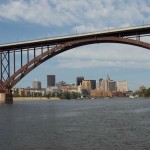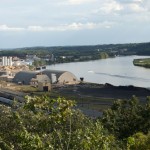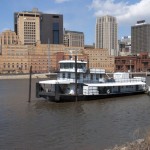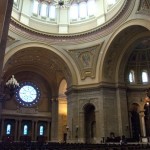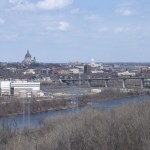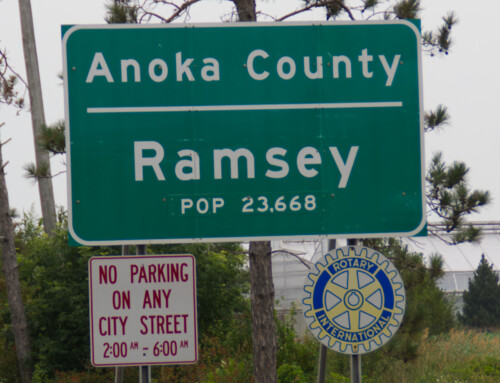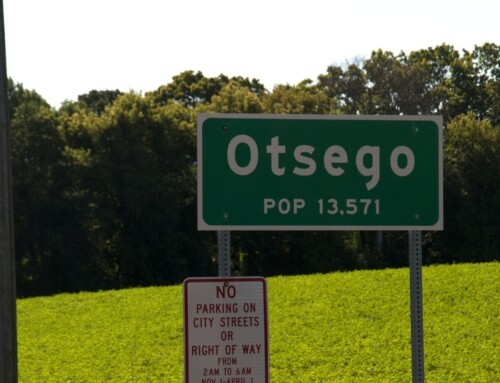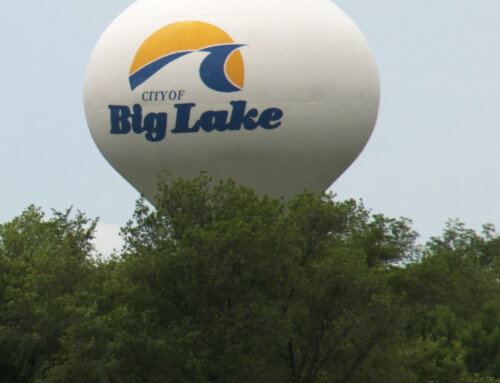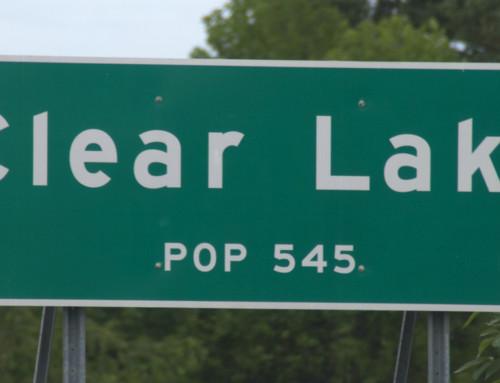Introduction
St. Paul has a reputation for being the more staid half of the Twin Cities, and, yea, there’s some truth to it. Not that there’s anything wrong with that. Downtown St. Paul may lack the nightlife and glitz of downtown Minneapolis, but St. Paul has strong neighborhoods, plenty of good restaurants, a diverse community, and a continually evolving riverfront that keeps getting better every year.
**Check out the photo gallery at the end of the post.
Visitor Information
Direct your questions to the good folks at Visit St. Paul in the Landmark Center in downtown (75 W. 5th St.; 651.265.4900).
History
Much of the City of St. Paul was built atop or below limestone-faced bluffs that rise 50-80 feet above the Mississippi River. Prior to the arrival of Europeans, this stretch of the Mississippi River was home to a number of Dakota sacred sites and seasonal settlements. The area around Wakan Tipi (spirit cave), in particular, was an important area where different groups of Dakota met to trade and connect with each other (see Vento Nature Sanctuary below for more).
Among the earliest Europeans to arrive were French Canadians and Métis who were unhappy with life at a settlement called Fort Garry (today’s Winnipeg); they were attracted to this area by the frontier fort (Fort Snelling) and the stability it promised. Colonel Snelling gave them permission to live on the military reserve at the abandoned Camp Coldwater on the west side of the river. Some began to farm, while others worked the fur trade; over time they were joined by a few retired voyageurs and discharged soldiers. An informal census in 1837 counted 82 residents at Camp Coldwater, 75 downriver at Mendota, and 5 or 6 others on the east side of the Mississippi River.
One of the early settlers was Pierre Parrant, a former voyageur who made a claim in 1832 along the Mississippi River near Fountain Cave. Parrant was about 60 years old when he moved to the area, and the voyageur lifestyle had taken on a toll on his physical appearance. Then again, maybe he was never all that good to look at. He was blind in one eye, an eye that was described as “marble-hued and crooked, with a sinister white ring glaring around the pupil, giving a kind of piggish expression to his sodden low features.” Because of that defining feature, Parrant was better known as Pig’s Eye, a nickname that he never warmed up to.
The area around his claim also took on the name “Pig’s Eye”, thanks to Edmund Brisset: “I looked up inquiringly at Parrant and, seeing his old crooked eye scowling at me, it suddenly popped into my head to date it {a letter he was writing} at Pig’s Eye, feeling that the place would be recognized, as Parrant was well known along the river. In a little while an answer was safely received, directed to me at Pig’s Eye.”
Parrant hoped to use his claim as a base for selling booze, something that didn’t sit well with the military officials, but he proved to be his own worst enemy. Within a few months of getting settled in, he borrowed money from William Beaumette, using his claim as collateral. When Parrant failed to pay back the loan, Beaumette took ownership of the claim. Parrant continued to make other claims in the area—and to sell alcohol—finally selling his last parcel to Benjamin Gervais in 1844. He died not long after than while en route to Sault St. Marie, Michigan.
Minnesota’s capital city might still be known as Pig’s Eye were it not for Father Lucien Galtier. He built a log church in 1841 on a high bank on the east side of the river. On November 1st, he blessed it and dedicated it to Saint Paul. Galtier had been living downriver at St. Peter (now called Mendota) and thought Paul and Peter were so connected that he should name the new church after Paul. After he completed the church, he lobbied for the settlement to adopt the same name. He got his way. The new steamboat landing that developed nearby became known as St. Paul’s Landing, then just St. Paul. Parrant’s nickname didn’t disappear entirely, though; it lives on with Pig’s Eye Lake and St. Paul-based Pig’s Eye Brewing Company.
Throughout much of the 1830s the small group of settlers co-existed with the military at Fort Snelling but by 1838 supplies were growing scarce and the military was increasingly unhappy with liquor sales coming from area. The officers eventually cracked down and forced everyone to move off of military property; most just moved downriver a few miles. In 1840, the military extended the boundaries of the reservation but folks again refused to move, so in May soldiers marched in and forcefully evicted everyone, destroying their cabins in the process. Most of the settlers from that group moved into what is now downtown St. Paul, an area where settlement was legal after the 1837 treaty with the Dakota.
The earliest residents of St. Paul may have been mostly French Canadian, but early arrivals also included settlers who were Swiss, Danish, Swedish, Native American (Dakota, mostly), and even a former slave, James Thompson. Germans arrived beginning in the late 1840s, including many were Jewish; Mount Zion Hebrew Congregation was founded in 1856.
Irish immigrants moved to St. Paul very early, too. Three hundred people marched in the city’s first St. Patrick’s Day parade in 1851. Even though the city had a wide range of ethnic groups in its neighborhoods, the Irish and Germans would dominate much of the city’s social and civil life for decades. (Nine of the ten mayors between 1932 and 1972 had Irish ancestry.)
The early success of St. Paul hinged largely on its role as the end of the 400-mile Red River Ox Cart Trail and the northern end of navigation on the Mississippi River. Throughout the mid-1800s, two-wheeled carts pulled by oxen traveled between Fort Garry (Winnipeg) and St. Paul via Pembina (now in North Dakota). Caravans of carts, sometimes hundreds of them, moved fur and bison pelts from the northern plains to markets in St. Paul; from there, the furs could then be shipped down the Mississippi River. On the trip back north, the ox carts carried supplies like food and clothing. The ox carts were eventually made obsolete by the railroads.
Minnesota officially became a US Territory on March 3, 1849 but it took a month for the news to reach St. Paul because the frozen river had slowed mail delivery. Congress designated St. Paul as the temporary capital, leaving residents of the territory to choose a permanent site. It took more than a little trickery and deal-making for St. Paul to remain the seat of government. St. Paul faced competition for the capital from Stillwater and St. Anthony (now Minneapolis). In 1851, the issue was settled by good old-fashioned horse trading: St. Paul kept the capitol, but St. Anthony would get the state university and Stillwater the state prison.
In 1857 the territorial legislature passed a bill that would have moved the capital to St. Peter (now Mendota). Not everyone thought that was a good idea, like Joseph Rolette. He was a successful fur trader from a prominent family (Jane Fisher and Joseph Rolette of Prairie du Chien); Rolette had been instrumental in starting the Red River Ox Cart Trail. Jolly Joe, as he was known, served in the legislature as a representative for the village of Pembina. As chair of the Enrolled Bills Committee, it was his job to oversee certification of the bill, so it could be passed on to the governor for his signature. The bill reached his committee on February 28, and Rolette, rather than stealing the bill as the story is commonly told, he simply went AWOL. Without him present at the meeting, the committee couldn’t take any action on the bill.
For the next week, Rolette hid out (in plain sight, it seems) at a hotel (or maybe a brothel; there are variations in the story) where he played cards and enjoyed a few adult beverages each day. A week later as the legislative session was ending, Rolette resurfaced and the committee reported that it had been unable to certify the bill, thus killing it. Or so it seemed. During Rolette’s absence, the legislature passed a duplicate copy of the bill that was promptly signed by the governor. A court later threw out the duplicate bill, ruling that the second bill hadn’t been approved through the required channels. St. Paul kept the capitol and Jolly Joe became a folk hero. As far as I know, there is no statue of Rolette in St. Paul (just a couple of portraits), but there should be, preferably one showing him with a drink in one hand and cards in the other.
As the city was getting started, steamboats kept the community well-stocked and the residents connected to the outside world. The arrival of the first steamboat of the season was therefore a welcome moment that was often greeted with a big party. Early St. Paul had two good steamboat landings: the Lower Landing at Jackson Street (today’s Lambert Landing) and Upper Landing at Chestnut Street.
St. Paul incorporated as a city with three wards in 1854 and was doing pretty well. Much of the early growth came from government services and transportation, but rampant land speculation drove prices artificially high in the 1850s and slowed things down. When the financial panic of 1857 hit, it took a heavy toll on St. Paul, as it lost half its population and 80% of its businesses.
That early city was no thing of beauty, by the way. There were no parks, the muddy streets were narrow and lined with wooden buildings. Trash collected in piles all over the place, and the city stuck to high heaven thanks to the slaughterhouses and rendering plants. Early residents needed good boots and a strong stomach just to get through a typical day.
In 1862, the St. Paul and Pacific Railroad built a line connecting St. Paul to St. Anthony. The railroad grew into a national force after the Civil War, solidifying St. Paul’s role as a transportation hub for the Upper Midwest and the gateway to the Northwest. In 1888, an astonishing 8 million people passed through St. Paul’s Union Depot on one of the 150 daily trains. The railroad grew to dominate the transportation network, because it didn’t have to shut down for half the year like the Mississippi River.
St. Paul’s population growth picked up again after the Civil War, with a wide range of ethnic groups settling in. City residents could read newspapers that were printed in English, German, Swedish, Norwegian, Danish, and French. Chinese immigrants began arriving in 1870s.
In 1863, Robert Hickman arrived in St. Paul on a raft with 176 fugitive African Americans fleeing the south; other former slaves followed, enough to found five African American churches in St. Paul by 1900. Minnesota gave voting rights to black men in 1868, two years earlier than the US government, and passed a Civil Rights act that prohibited discrimination based on race in 1898. The African American community was centered around Rondo Street, an area that was largely razed when Interstate 94 was constructed.
The West End began attracting immigrants from Italy’s Abruzzi-Molise region in the early 1900s. They settled near the Upper Landing below the High Bridge but were forced to move after severe flooding in the 1950s; many of the businesses ended up on 7th Street.
Fun Fact: St. Paul’s West Bank is actually south of downtown.
Immigrants from Mexico began arriving in the mid-1910s; many came to work in the sugar beet industry, recruited because of labor shortages caused by World War I. Immigrants from Southeast Asia, many of them from the Hmong ethnic group, began settling in St. Paul in the late 1970s in the aftermath of the Vietnam War. St. Paul also had a small wave of migration of Russian Jews in the 1980s.
During World War I, antipathy to Germany and Germans led to some remarkable efforts at renaming common objects:
- Sauerkraut became liberty cabbage
- Dachshunds became liberty hounds
- German fried potatoes became American fries
- Hamburger became Salisbury steak
On at least two occasions, St. Paul officials were unwilling to go along with laws that restricted the sale of alcohol. In 1852 the Territorial Legislature outlawed the sale of alcohol and banned liquor dealers from juries. St. Paul refused to enforce the law, which was eventually thrown out by the courts. During Prohibition, the Green Lantern (a speakeasy on Wabasha Street that was a popular place with the gangster set) was perhaps the only place in town where you could get a beer that had alcohol, although other types of alcohol were easy enough to come by.
In the early part of the 20th century, crime was endemic in St. Paul, so police chief John O’Conner came up with a unique way to fight back. Under the O’Conner Layover System, criminals were left alone within the city limits as long as they followed three rules: 1) non-resident criminals had to let the police know they were in town; 2) they had to refrain from criminal activity within the city limits, and 3) they had to pay a service fee, what some might call a bribe. The system worked well, at least for St. Paul, as crime rates in the city dropped dramatically. Neighboring areas weren’t quite as lucky.
O’Conner kept tight control of the system, but he retired in 1920 and his successors weren’t as adept. The whole system unraveled after Prohibition was repealed, depriving the criminal networks if a major revenue stream. Looking for new opportunities, some of the criminals broadened their activities into kidnapping. In 1933 William Hamm, Jr. (president of Theodore Hamm’s Brewery) was held for ransom, and the next year Edward Bremer (heir to the Schmidt Brewery estate) was also kidnapped. Federal agents got involved in the cases and began poking around St. Paul police offices. Most of those involved in the O’Conner system were either jailed or shown the door. O’Conner, who had a reputation as being one of the best detectives in the country, seemed to have had the best of intentions. From all indications, he sincerely believed that this system would be good for the city. He wasn’t entirely wrong, either.
Downtown St. Paul has lost much of its historic architecture. From 1963 to 1975, 240 of the 400 retail stores that had once lined the streets were razed for urban renewal efforts, including almost all of the neighborhoods around the state capitol. Twelve square blocks in the heart of downtown were replaced by bland modernist buildings connected by skyways that protected folks from the cold weather but that took foot traffic off the streets and away from the storefronts.
Bonus Fact: Charles Schultz, the creator of the Peanuts comic strip, was born in St. Paul.
NOTE: See the Twin Cities Overview for tips on festivals, getting around, and more.
Exploring the Area
NOTE: This is not a comprehensive guide to touring Saint Paul. Instead, you‘ll find an overview of the major attractions in the city, with an emphasis on those that relate to the Mississippi River in some way.
The Minnesota State Capitol (75 Rev. Martin Luther King Blvd.; 651.296.2881) is a magnificent piece of architecture. Designed by Cass Gilbert and opened in 1905, the building is Renaissance Revival in style and, style it has aplenty. The building was constructed from 16 different types of marble, and the self-supported marble dome is the second largest in the world. The interior is accented with statues and paintings from accomplished artists. You can explore the building on your own or take a 45-minute guided tour (offered daily; free but donations appreciated).
The imposing Cathedral of Saint Paul (239 Selby Ave; 651.228.1766) is the fourth built for the archdiocese. Construction began in 1906 and wasn’t completed until nine years later. The project nearly ran out of money in 1912, but the diocese managed to raise an additional $100,000 from the community to finish the copper-clad dome. The interior, though, took another 40 years to complete. The Renaissance-style building feels massive in scale, but the interior is open and softened by a number of archways. Visitors are welcome to wander around when no mass is in progress. You can pick up a print guide for a couple of bucks.
The Landmark Center (75 W. 5th St.), built in 1902 as the US Post Office, Court House, and Custom House, hosts a visitors information center and several historical displays. Inside you’ll also find the Gallery of Wood Art that showcases exceptional examples of wood carving skills, as well as the Schubert Club Museum that has a large collection of keyboards and musical instruments from around the world.
The Minnesota History Center (345 Kellogg Blvd. West; 651.259.3000) has a number of fun and interesting exhibits on the state’s history (climb inside the grain elevator at Grainland!) and a fantastic research library.
The Science Museum of Minnesota (120 W. Kellogg Blvd.; 651.221.9444), besides hosting all the weird and wonderful science-y type deals (like a collection of very scary antique medical devices), has a whole gallery dedicated to the Mississippi River, as well as great views of the river from inside and out. In the lobby of the Science Museum, you’ll also find the Mississippi River Visitor’s Center (120 W. Kellogg Blvd.; 651.290.4160), staffed by National Park Service rangers who are eager to answer your questions about the 72-mile long Mississippi National River and Recreation Area.
Downriver from what is now downtown, the floodplain below the bluffs was a meeting spot for the Dakota, an area they called Imnizaska (the place with the white cliffs). When Jonathan Carver passed through in 1766, he wrote about a cave called Wakan Tipi (spirit cave) that the Dakota both revered and feared for the spirits that lived inside. Carver wrote that he saw a variety of hieroglyphics on the cave walls (snakes, birds, turtles, people, and more). As Europeans moved in, the site was developed for industry, housing a brewery and rail infrastructure. By the 1970s, the area had been largely abandoned. When residents in adjacent areas pushed to restore the connections between their neighborhoods and the Mississippi River, the former industrial area proved to be a good place to start; thus was born the Vento Nature Sanctuary (at Commercial St. and 4th St. East; 651.260.6260). You can explore the sanctuary via an easy stroll on the walking trails that wind through restored wetlands and next to the bluffs. The cave, however, was greatly altered when the railroad chopped off a big chunk of rock face to build tracks and the newest entrance that was created is closed off.
James J. Hill built the railroad (the Great Northern Railway) that helped build the Great Plains and the Northwest. This, of course, made him a very wealthy man, and a very wealthy man needs a very big house to call home. He got his home in 1891 with the completion of an imposing Richardsonian Romanesque mansion. The house has 22 rooms, a 2-story art gallery, rich woodwork, and much more spread throughout its 36,000 square feet. The Minnesota Historical Society conducts tours of the James J. Hill House throughout the year (240 Summit Avenue; 651.297.2555).
The Alexander Ramsey House (265 S. Exchange St.; 651.296.8760) was the home built for Minnesota’s first territorial governor and second governor after statehood. Ramsey also served as Indian agent for the US government, a role in which he had a hand in the tragedy that involved the attempted relocation of Ojibwe to Sandy Lake (hundreds died), as well as negotiating land cession treaties with the Dakota (Sioux) Indians. During his tenure as governor, a major conflict erupted with the Dakota, sparked largely by Dakota discontent over the US government’s failure to fulfill its treaty obligations. As the fighting broke out, Ramsey summarized the state’s goal: “The Sioux Indians of Minnesota must be exterminated or driven forever beyond the borders of the state.” I don’t mean to highlight just the negative aspects of Ramsey’s legacy, but those were pretty big deals. Apart from his role oppressing Indians, though, he was a very successful politician and businessman, serving as a US Senator and making a killing in real estate. He started construction on his house in 1868, and made sure that it was outfitted with the most advanced technology of the day: hot and cold tap water, gas lighting, and radiator heat. The house is surprisingly large and 95% of the furnishings in the house today are original. Opportunities to visit are currently limited to group tours and special events.
The Bell Museum (2088 Larpenteur Ave. W; 612.626.9660) has a nice collection of dioramas by artist F. Lee Jacques, as well as good exhibits on the natural world in an impressive and engaging new building on the St. Paul campus of the University of Minnesota.
The Gibbs Museum of Pioneer and Dakotah Life (2097 W. Larpenteur Ave.; 651.646.8629; open May to October) preserved much of the pioneer farmstead of Jane and Heman Gibbs. The site also has exhibits about the Dakota who lived in the area around the time that the Gibbs family built their farmstead.
Como Park (1225 Estabrook Dr.; 651.266.6400) is among the best urban parks in the country. Among its 384 acres, you’ll find a small zoo, a Victorian conservatory, the 100-year old Cafesjian’s Carousel that was saved from auction in the 1980s, kayaks and paddle boats you can rent for a spin on Lake Como, and plenty of room to spread out and take a walk or enjoy a picnic.
Parks Along the River
Saint Paul has no shortage of riverfront parks (651.632.5111 for info); from upriver to downriver, they include:
- Mississippi Gorge Regional Park (overlook at the west end of Summit Ave.)
- Shadow Falls Park (30 Mississippi River Blvd. North)
- Hidden Falls Regional Park (1313 Hidden Falls Dr.; 651.632.5111)
- Crosby Farm Regional Park (2595 Crosby Farm Rd.; 651.632.5111)
- Cherokee Park (700 Cherokee Heights Blvd.); blufftop with hiking trails and good views of the river
- Harriet Island Regional Park (200 Dr. Justus Ohage Blvd.; 651.292.7010)
- Upper Landing Park (Shepard Rd below the High Bridge)
- Kellogg Mall (62 Kellogg Blvd. East)
- Lower Landing Park (Shepard Rd./Warner Blvd. at Jackson St.)
- Wakan Tipi/Bruce Vento Nature Sanctuary (at Commercial St. and 4th St. East); see above
- Indian Mounds Regional Park (10 Mounds Blvd.) has 6 Hopewell-era mounds atop Dayton’s Bluff, plus good views of the river.
- Pig’s Eye Park (81 Fish Hatchery Rd.); an old industrial area is slowly being given back to nature; the park has a mix of wetlands, prairie, and floodplain forest that attracts a lot of birds
Getting on the River
Padleford Riverboats (651.227.1100) offers day cruises on the Mississippi River from Harriet Island.
You can rent a kayak from a PaddleShare station in Hidden Falls Park (1313 Hidden Falls Dr.) and paddle 6.3 miles to Harriet Island.
Tours
Mobile Entertainment (952.888.9200) leads Segway tours around downtown.
Volunteers of the Audubon Society periodically conduct birding tours around the area; give them a call (651.291.2596) or check their website for details.
Gray Line runs bus tours around the Twin Cities (612.929.8687), like the 3-hour tour showcasing the highlights of the metro area.
If you’re looking for a good excuse to drink during the daytime, take a tour of the Summit Brewery (910 Montreal Circle; 651.265.7800); you’ll be rewarded with samples at the end.
The Wabasha Cave Tour (215 Wabasha St. South; 651.292.1220) is more than a little bit cheesy, but it’s generally fun—once you get past all the silly rules about sharing pictures (don’t even think about it!) and quoting anything the tour guides says (don’t even think about it!). Those caves, carved out of bluffs along the Mississippi River’s floodplain, have housed experiments with blue cheese, a jazz club, and crooks hiding out from the law.
Entertainment and Events
The St. Paul Saints, a baseball team in the American Association of Professional Baseball play at CHS Field (360 Broadway; 651.644.6659 for tickets) in the Lowertown neighborhood.
The historic Fitzgerald Theater (10 East Exchange St.; 651.290.1200), opened in 1910, serves as the largest performance space for Minnesota Public Radio.
The Ordway Center for the Performing Arts (345 Washington; 651.224.4222) hosts live performances that include Broadway musicals, drama, and music. Check the schedule to see who’s in town.
Farmers Market
Farmers markets generally operate from May through October. The big one is downtown (290 E. 5th St.; 651.227.8101) on Saturdays (6a-1p) and Sundays (8a-1p) from May-November. In winter, the market runs on Saturdays (9a-1p).
Festivals
You may think it odd to stand outside on a downtown street in Saint Paul in January to watch a parade, but I thought it was exhilarating. Folks up here have been throwing a Winter Carnival since 1886. If standing outside for the festivities doesn’t appeal to you, you can always grab a viewing spot from one of the skywalks, or just check out the ice and snow sculptures or one of the myriad concerts and special events over the two weekends.
Saint Paul celebrates its ethnic diversity with the Festival of Nations at downtown’s RiverCentre in early May.
Head to Harriet Island in early August for the Irish Fair of Minnesota.
The Minnesota State Fair is arguably the major social event of the season (late August), a granddaddy of an event that is part county fair (complete with livestock judging), part amusement park (with a busy Midway), part gustatory challenge (think deep-fried bacon or hotdish on a stick), and part music festival (much of it included in the standard admission price).
See the Twin Cities Overview page for more festivals you shouldn’t miss.
**Saint Paul is covered in Road Tripping Along the Great River Road, Vol. 1. Click the link above for more. Disclosure: This website may be compensated for linking to other sites or for sales of products we link to.
Where to Eat and Drink
The Twin Cities have their fair share of foods that come with a heavily local slant. One of the more famous concoctions is the juicy lucy, a hamburger stuffed with cheese. They’ve been serving them here for decades, while the rest of us are Johnny-come-latelies. Jess Fleming, food writer for the St. Paul Pioneer Press, recommends Matt’s Bar in Minneapolis (3500 Cedar Ave. S.; 612.722.7022) for a taste of the original (with American cheese) or the Blue Door Pub in St. Paul (1811 Selby Ave.; 651.493.1865) if you’re more adventurous (they have many cheese options, including blue cheese); you’ll see it on many menus, though.
For an overview of the food scene in Saint Paul, check out Mpls.St.Paul Magazine. Below are a few places that are either long-time favorites or that offer a predictably good experience:
Like Minneapolis, Saint Paul has a booming craft beer scene. Take an evening and sample what they have to offer but consider letting someone else do the driving for you, like Lyft, Uber, or public transportation. Scan through The Ultimate Guide to All the Breweries in Minneapolis and St. Paul, which lists every craft brewery in St. Paul and even places them on a map for you.
Wuollet Bakery (1080 Grand Ave.; 651.292.9035) has been satisfying locals cravings for sweet things since 1944. Take your time browsing the selection of cakes, tortes, and donuts, but don’t skip the tasty bars!
La Boulangerie Marguerite (1279 Randolph Ave.; 651.699.9292) is another great option for baked goods, especially for French-inspired ones. The cozy retail store offers fresh bread, croissants, macarons, and other beautiful pastries.
Step back in time and enjoy a good burger and fries at Mickey’s Diner (36 W. 7th St.; 651.222.5633), an old-school diner in an old-school diner car in the heart of downtown.
For good, affordable Thai food, check out downtown’s Ruam Mit Thai (475 St. Peter St.; 651.222.7871).
Cossetta Italian Market and Pizza (211 7th St. W; 651.222.3476) began as a small market in 1911 to serve residents of the Upper Levee neighborhood but has since grown into something of an Italian food megaplex. You can still browse Italian food products in the market (including many ready-to-eat meals), then grab a pizza or traditional Italian entrée at the cafeteria-style restaurant. Finish the experience with a delectable pastry such as cannoli or maybe a cup of tasty gelato. When the weather is nice, you can enjoy your food on the rooftop patio.
The Tavern on Grand (656 Grand Ave.; 651.228.9030) serves a ton of walleye every week—literally!—and they can prepare it just about any way you want it.
For a traditional Friday night fish fry, check out Obb’s Sports Bar (1347 Burns Ave.; 651.776.7010); it’s the real deal.
For 40 years, W.A. Frost (374 Selby Ave.; 651.224.5715) has been turning out excellent, contemporary food from its home in a gorgeous, historic building near the Cathedral. If you’re more thirsty than hungry, the bar is fully stocked and includes a good selection of local beers, which still won’t be enough to divert your eyes from the gorgeous woodwork and tin ceiling.
Where to Sleep
Like Minneapolis, Saint Paul has plenty of lodging options. Downtown hotels are convenient, but they can be expensive; you might be able to find a better deal through Airbnb. For something different from the standard chain hotels, consider the options below.
Bed-and-Breakfast Inns
The Covington Inn (100 Harriet Island Rd.; 651.292.1411) is an experience unlike any other along the Mississippi. A converted tow boat anchored to Harriet Island, the inn rents four unique suites, each with a stellar view. Downtown is a short walk away, and breakfast is delicious.
The Historic District B&B (483 Ashland Ave.; 763.360.3717) rents four rooms and a carriage house in a 19th century home just a few minutes from downtown in the Ramsey Hill neighborhood. Rooms are updated and immaculate and within walking distance of restaurants and shops. A full gourmet breakfast is included with the price.
Another beautiful old mansion has been converted into the New Victorian B&B (325 Dayton Ave.; 651.321.8151). Built in 1881 in the Cathedral Hill neighborhood, the massive house is filled with exquisite woodwork and other details and has a lot of room to spread out. Two of the four rooms come with a balcony. The house is on a lovely tree-lined street and within walking distance of places to eat and shop.
Moderate and up
Housed in a former convent and arts conservatory, Celeste of St. Paul (26 Exchange St. E.; 651.222.0848) dazzles with beautiful, open spaces. Walls are decorated with fine art and stained glass windows cast colored light. Guest rooms are sleek and modern. The price is reasonable for the location in the heart of downtown (a few steps from the Fitzgerald Theater) and includes a hot breakfast. Parking is available at a nearby garage
The historic Saint Paul Hotel (350 Market St.; 800.292.9292) has hosted Charles Lindbergh, the gangster Leon Gleckman, and Lawrence Welk. You could be next. The 254-room hotel blends the classic architecture of the past with modern luxury touches.
The Davidson Hotel (344 Summit Ave.; 651.560.2009) offer nine luxury suites in a century-old mansion built for a railroad executive. The hotel is located among a row of other mansions near the Saint Paul Cathedral and overlooks the Mississippi.
Getting There
See the Twin Cities Overview for information on getting to and around Saint Paul.
Where to Go Next
Heading upriver?
- On the east bank check out the Minneapolis guide.
- On the west bank check out Lilydale.
Heading downriver?
- On the east bank check out Newport.
- On the west bank check out South St. Paul.
Community-supported writing
If you like the content at the Mississippi Valley Traveler, please consider showing your support by making a one-time contribution or by subscribing through Patreon. Book sales don’t fully cover my costs, and I don’t have deep corporate pockets bankrolling my work. I’m a freelance writer bringing you stories about life along the Mississippi River. I need your help to keep this going. Every dollar you contribute makes it possible for me to continue sharing stories about America’s Greatest River!
St. Paul Photographs
- The High Bridge over the Mississippi River at St. Paul, MN
- The Mississippi River south of downtown St. Paul
- St. Paul, MN railyards
- Covington Inn, St. Paul, MN
- Cathedral of St. Paul
- St. Paul, MN and the Mississippi River
A Song for St. Paul
Heart of St. Paul; Bernard Allison’s cover of the tune written by the late Andy Bailey (2008)
©Dean Klinkenberg, 2013,2017

